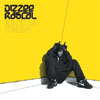 Finally, after a year and a half, the mercury prize for album of theyear, a stabbing, and endless amounts of hype-slipping across theAtlantic Ocean about a true slice of the U.K. Garage scene (unlike theamusing, but hardly definitive Original Pirate Material)landing stateside and demolishing the anemic backpacker underground,Dizzee Rascal has arrived. While it's difficult to say that anythinglavished with so much unyielding praise could ever live it down, Boy in Da Cornerdoes quite a bit to support it. It is a brilliant collection of bangersthat can be at times furious and frothing, and other times insightfuland contemplative. Rascal doesn't' fall prey to the run of the mill hiphop clich?, giving issues like violence and sexuality their due with amore sensitive eye than most. When others fall prey toself-contradiction and self-involvement, Dizzee finds a consistency andbalance, a sense of control-not bottled or volatile but reigned in,precise and deftly employed. His tracks are punctuated with off kilter,upside down beats that sound like they're coming from water damageddrum machines and synthesizers. They fall on top of each other in afilthy collision of thin, piercing claps of metallic shards and wobblynotes with a thick and heavy low end. The thick East London accent thatdominates his delivery decimates the sleepy flow of mainstream rapperslike 18 Cent as well as the squeaky bleats of American undergroundcounterparts like Aesop Rock. Rascal doesn't cop out and slack on hisbeats for the sake of his lyrics or mumble his way through his tracksto show off his production. His voice is ingrained in the music, asaggressive an instrument as the concussive pipe bomb percussion thatpropels him. "Stop Dat" is a knives-out assault, spitting lyrics acrossan adrenaline-fueled crush of ominous clashes and crunches. Everyslit-eyed glance and sized up plot comes across in his venomous accent."I Luv U" pairs Dizzee with the clearly annoyed vocals of JeanneJacques, trading chorus lines Positive K style over throbbing IDMbeats, and shows that Mike Skinner wasn't exactly telling the truthwhen he said "round 'ere we call 'em birds / not bitches." Along with"Jezebel," this track explores the male female interaction with askeptical and critical eye, lampooning careless sex andirresponsibility while bemoaning the devastating (and cyclical) resultsof teenage promiscuity. "Do It" is a sincere, contemplative piece whereDizzee reveals himself, going deeply into personal insecurity, fearsand doubts and closing with the decidedly upbeat notion that "you cando anything." Boy in the Corner is a devastating salvo thatwill leave Rascal's contemporaries (particularly those in the UnitedStates) shell shocked and dazed. This record will sit at the head ofthe pack and give everyone a target to aim for, whether it is toemulate it's successful formula or kill it with something even moreforward looking and fresh. Hopefully his example will provoke otherhip-hop, rap, garage, grime innovators to come forth and show whatthey've got, and serve as a warning to all those who are alreadystagnant that it's time to fix up and look sharp.
Finally, after a year and a half, the mercury prize for album of theyear, a stabbing, and endless amounts of hype-slipping across theAtlantic Ocean about a true slice of the U.K. Garage scene (unlike theamusing, but hardly definitive Original Pirate Material)landing stateside and demolishing the anemic backpacker underground,Dizzee Rascal has arrived. While it's difficult to say that anythinglavished with so much unyielding praise could ever live it down, Boy in Da Cornerdoes quite a bit to support it. It is a brilliant collection of bangersthat can be at times furious and frothing, and other times insightfuland contemplative. Rascal doesn't' fall prey to the run of the mill hiphop clich?, giving issues like violence and sexuality their due with amore sensitive eye than most. When others fall prey toself-contradiction and self-involvement, Dizzee finds a consistency andbalance, a sense of control-not bottled or volatile but reigned in,precise and deftly employed. His tracks are punctuated with off kilter,upside down beats that sound like they're coming from water damageddrum machines and synthesizers. They fall on top of each other in afilthy collision of thin, piercing claps of metallic shards and wobblynotes with a thick and heavy low end. The thick East London accent thatdominates his delivery decimates the sleepy flow of mainstream rapperslike 18 Cent as well as the squeaky bleats of American undergroundcounterparts like Aesop Rock. Rascal doesn't cop out and slack on hisbeats for the sake of his lyrics or mumble his way through his tracksto show off his production. His voice is ingrained in the music, asaggressive an instrument as the concussive pipe bomb percussion thatpropels him. "Stop Dat" is a knives-out assault, spitting lyrics acrossan adrenaline-fueled crush of ominous clashes and crunches. Everyslit-eyed glance and sized up plot comes across in his venomous accent."I Luv U" pairs Dizzee with the clearly annoyed vocals of JeanneJacques, trading chorus lines Positive K style over throbbing IDMbeats, and shows that Mike Skinner wasn't exactly telling the truthwhen he said "round 'ere we call 'em birds / not bitches." Along with"Jezebel," this track explores the male female interaction with askeptical and critical eye, lampooning careless sex andirresponsibility while bemoaning the devastating (and cyclical) resultsof teenage promiscuity. "Do It" is a sincere, contemplative piece whereDizzee reveals himself, going deeply into personal insecurity, fearsand doubts and closing with the decidedly upbeat notion that "you cando anything." Boy in the Corner is a devastating salvo thatwill leave Rascal's contemporaries (particularly those in the UnitedStates) shell shocked and dazed. This record will sit at the head ofthe pack and give everyone a target to aim for, whether it is toemulate it's successful formula or kill it with something even moreforward looking and fresh. Hopefully his example will provoke otherhip-hop, rap, garage, grime innovators to come forth and show whatthey've got, and serve as a warning to all those who are alreadystagnant that it's time to fix up and look sharp. samples:


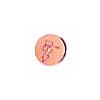 Yeah is one of two new platters of tasty wax from DFA Records, certainly the most name-checked label since anyone gave a shit about Warp Records. James Murphy's LCD Soundsystem hasn't released a new 12" single since 2002's "Losing My Edge," even though private edition tracks like "Tribulations" and "Where Is Love?" have been popping up on file-sharing services over the past year. Rather than officially releasing one of the aforementioned tracks, Murphy's Soundsystem has crafted a new track aimed straight at clubs: a massive, obnoxious punk-disco meltdown destined to be the set-closing favorite of DJs everywhere in coming months.
Yeah is one of two new platters of tasty wax from DFA Records, certainly the most name-checked label since anyone gave a shit about Warp Records. James Murphy's LCD Soundsystem hasn't released a new 12" single since 2002's "Losing My Edge," even though private edition tracks like "Tribulations" and "Where Is Love?" have been popping up on file-sharing services over the past year. Rather than officially releasing one of the aforementioned tracks, Murphy's Soundsystem has crafted a new track aimed straight at clubs: a massive, obnoxious punk-disco meltdown destined to be the set-closing favorite of DJs everywhere in coming months.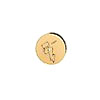
 Robin Saville and Antony Ryan return with their fourth album (and thirdfor Morr) since their inception in 1996. In keeping with their previouswork, Meet Next Lifecombines warm textures with cool soundscapes to create a thoroughlybalanced album of lush, often touching instrumental melodies that arenever overwrought. While their last record, Lucky Cat wasslightly more minimal, their latest finds the band carefully expandingtheir horizons, particularly in terms of diversity. The first track,"Birds Over Barges," brings crystalline acoustic guitar to the mix,adding a gauzy dimension to the sounds of the analogue synths. Fromthere, the songs slide and drift languidly into one another, andalthough the overall sound of the album is subtle and understated, ISANmanages to avoid lapsing into monotony. "One Man Abandon" and"Snowdrops and Phlox" are winsome lullabies, while "The Race To BeFirst Home" is winsomely playful with its jubilant xylophone sounds.The haunting title track, which brings Meet Next Life to a close, is strongly reminiscent of Brian Eno's Apollo.The best of the bunch, "Gunnera," amazingly brings all these elementstogether in what is definitely the signature piece of the album. I findit apt that ISAN chose black and white butterflies to adorn the coverof Meet Next Life as it speaks volumes about their gossamer simplicity. It is a record that is as elegant as it is modest.
Robin Saville and Antony Ryan return with their fourth album (and thirdfor Morr) since their inception in 1996. In keeping with their previouswork, Meet Next Lifecombines warm textures with cool soundscapes to create a thoroughlybalanced album of lush, often touching instrumental melodies that arenever overwrought. While their last record, Lucky Cat wasslightly more minimal, their latest finds the band carefully expandingtheir horizons, particularly in terms of diversity. The first track,"Birds Over Barges," brings crystalline acoustic guitar to the mix,adding a gauzy dimension to the sounds of the analogue synths. Fromthere, the songs slide and drift languidly into one another, andalthough the overall sound of the album is subtle and understated, ISANmanages to avoid lapsing into monotony. "One Man Abandon" and"Snowdrops and Phlox" are winsome lullabies, while "The Race To BeFirst Home" is winsomely playful with its jubilant xylophone sounds.The haunting title track, which brings Meet Next Life to a close, is strongly reminiscent of Brian Eno's Apollo.The best of the bunch, "Gunnera," amazingly brings all these elementstogether in what is definitely the signature piece of the album. I findit apt that ISAN chose black and white butterflies to adorn the coverof Meet Next Life as it speaks volumes about their gossamer simplicity. It is a record that is as elegant as it is modest. Arthur Russell died in 1992, leaving an enigmatic body of work that took in avant-garde composition, Indian classical music, atmospheric cello-driven pop, and most crucially, a handful of mysterious and entrancing 12" disco sides. The term "mutant disco" and "leftfield groove" had to be invented to pigeonhole Russell's forays into the embryonic NYC disco scene of the late seventies and early eighties.
Arthur Russell died in 1992, leaving an enigmatic body of work that took in avant-garde composition, Indian classical music, atmospheric cello-driven pop, and most crucially, a handful of mysterious and entrancing 12" disco sides. The term "mutant disco" and "leftfield groove" had to be invented to pigeonhole Russell's forays into the embryonic NYC disco scene of the late seventies and early eighties. I can think of no instrument capable of drones as complex, distinct, orprimitive as those generated by the pipe organ. The experience ofsitting below a great organ's clustered form, letting its breath washthe length of a cathedral, can be compared to viewing one ofRembrandt's late self-portraits, watching as each square-centimeterteems with an infinity of golden life, an inner millennium findingperfect equivalent in the sustained blast of an organ note. As if itstextural prowess and sacred acoustics were not enough, the organrepresents also a milestone in the mechanization of musicalinstruments, making it a prime target for this kind of tribute, avirtual who's-who of Touch's roster, some of the most recognizablenames in electro-acoustic music, all willing to shed their respectiveskins and make some music created with, or inspired by, organ sounds.Thankfully, most everyone included manages to come at the pipes in athoughtful and largely unique way, making Spirean endlessly interesting, if not always enjoyable compilation. Therange of different approaches, which in many cases depart significantlyfrom their composers' tested styles, proves both a blessing and acurse, where the sequencing of the two discs inevitably interferes withthe enjoyment of the individual tracks. Many interesting pieces seem toend prematurely or appear dwarfed by the enormity or lavishness oftheir surroundings. The contributions of Philip Jeck and Leif Elggren,shorter tracks focusing on solitary, largely unadulterated organblasts, fail to stand out among the longer, similarly fundamental orminimalist approaches of Biosphere and BJNilsen. Likewise, some of themore concept-oriented inclusions end up sounding much better on paperthan on disc, one example being Finnbogi P?ursson's "Diabolus" in whichthe artist's homemade single-pipe organ creates a low-frequency toneinterval that in Medieval times was referred to the "devil in music"but is barely audible here. In contrast, other loosely-conceptual worksmake for some of the best material, like Z'EV's woozy "If only thatlove let's letting happen," based entirely on samples of Bach's organmusic found via a Google search, and Toshiya Tsunoda's ambient"Layered," produced by a homemade shortwave radio organ set outside ona midsummer night. Generally, tracks on the second disc make for themost enjoyable pieces because they are long enough to become thicklyatmospheric, to fill the room with the same arresting, monumental calmthat great cathedral organs produce. BJNilsen (aka Hazard) actuallycomposed "Breathe" for performance at St. Mary's Church in WarwickEngland. The half-hour piece, a simple, unfolding drone spanning hugeintervals on organs constructed as early as 1898, is one of Spire'smost spare works and one of its most impressive. Other highlights fromthe disc include an Oren Ambarchi and Tom Recchion piece originallyreleased on a limited IDEA 7"; it makes sense here because Recchionplays Hammond on the track, though it is admittedly more in line withAmbarchi's solo work that anything particularly "organ-inspired." Spireends with new music from field recording guru Chris Watson whose windrecordings become an allegory identifying the organ with the elementalor divine act of harnessing the air, as well as associating theinstrument with a image of majesty that seems wholly justified at theclose of such a compilation.
I can think of no instrument capable of drones as complex, distinct, orprimitive as those generated by the pipe organ. The experience ofsitting below a great organ's clustered form, letting its breath washthe length of a cathedral, can be compared to viewing one ofRembrandt's late self-portraits, watching as each square-centimeterteems with an infinity of golden life, an inner millennium findingperfect equivalent in the sustained blast of an organ note. As if itstextural prowess and sacred acoustics were not enough, the organrepresents also a milestone in the mechanization of musicalinstruments, making it a prime target for this kind of tribute, avirtual who's-who of Touch's roster, some of the most recognizablenames in electro-acoustic music, all willing to shed their respectiveskins and make some music created with, or inspired by, organ sounds.Thankfully, most everyone included manages to come at the pipes in athoughtful and largely unique way, making Spirean endlessly interesting, if not always enjoyable compilation. Therange of different approaches, which in many cases depart significantlyfrom their composers' tested styles, proves both a blessing and acurse, where the sequencing of the two discs inevitably interferes withthe enjoyment of the individual tracks. Many interesting pieces seem toend prematurely or appear dwarfed by the enormity or lavishness oftheir surroundings. The contributions of Philip Jeck and Leif Elggren,shorter tracks focusing on solitary, largely unadulterated organblasts, fail to stand out among the longer, similarly fundamental orminimalist approaches of Biosphere and BJNilsen. Likewise, some of themore concept-oriented inclusions end up sounding much better on paperthan on disc, one example being Finnbogi P?ursson's "Diabolus" in whichthe artist's homemade single-pipe organ creates a low-frequency toneinterval that in Medieval times was referred to the "devil in music"but is barely audible here. In contrast, other loosely-conceptual worksmake for some of the best material, like Z'EV's woozy "If only thatlove let's letting happen," based entirely on samples of Bach's organmusic found via a Google search, and Toshiya Tsunoda's ambient"Layered," produced by a homemade shortwave radio organ set outside ona midsummer night. Generally, tracks on the second disc make for themost enjoyable pieces because they are long enough to become thicklyatmospheric, to fill the room with the same arresting, monumental calmthat great cathedral organs produce. BJNilsen (aka Hazard) actuallycomposed "Breathe" for performance at St. Mary's Church in WarwickEngland. The half-hour piece, a simple, unfolding drone spanning hugeintervals on organs constructed as early as 1898, is one of Spire'smost spare works and one of its most impressive. Other highlights fromthe disc include an Oren Ambarchi and Tom Recchion piece originallyreleased on a limited IDEA 7"; it makes sense here because Recchionplays Hammond on the track, though it is admittedly more in line withAmbarchi's solo work that anything particularly "organ-inspired." Spireends with new music from field recording guru Chris Watson whose windrecordings become an allegory identifying the organ with the elementalor divine act of harnessing the air, as well as associating theinstrument with a image of majesty that seems wholly justified at theclose of such a compilation.  There's a level of innocence and melodic clarity present on this discthat makes me wonder why it hasn't received more recognition. Then thedetermining factor hits me: this is too sweet, almost comical in itslazy strolling. Greg Davis obviously has an ear for gorgeous sounds anthe ability to craft elegant stretches of sound, but unfortuneately itseems as if he doesn't have the ability to create a coherent record.All the instrumentation is from traditional (i.e., non-electronic)sources and then warped and rearranged in various manners by way oflaptop. The heart of each instrument is present in the mix so eachinstrument is readily identifiable; the sound of rain, birds singing,and other environmental sounds make their way behind the instrumentsand then... nothing. Almost all of these songs have absolutely noprogression and if they do, it takes six minutes or so for any movementto happen. "Improved Dreaming" begins with the charming sounds of a toymusic box chirping away above the sounds of a cartoonish galaxy full oftwinkling stars and wisps of astral dust and then flows into the soundof woodwinds sighing out an exquisite melody... over and over and overagain. The whole thing runs six minutes plus but it could've had a morestunning effect at perhaps half that length. One track wouldn'tnormally bug me so much, but there's so much excellent happening thatit angers me at how dull it becomes because of repetition. And theproblem is infectious. I could do without the singing, too. While thealbum might intentionally have a whimsical feeling, the vocals don'tadd to that, they simply sound cheesey and a bit out of place. Curling Pnd Woodshas a lot of excellent spots, but those excellent spots wear offquickly. I recommend it in small doses; two tracks at a time is morethan enough too keep the sweetness level low and the monotony at aminimum. These tracks could've captivated me had they been released asa series of EPs or singles.
There's a level of innocence and melodic clarity present on this discthat makes me wonder why it hasn't received more recognition. Then thedetermining factor hits me: this is too sweet, almost comical in itslazy strolling. Greg Davis obviously has an ear for gorgeous sounds anthe ability to craft elegant stretches of sound, but unfortuneately itseems as if he doesn't have the ability to create a coherent record.All the instrumentation is from traditional (i.e., non-electronic)sources and then warped and rearranged in various manners by way oflaptop. The heart of each instrument is present in the mix so eachinstrument is readily identifiable; the sound of rain, birds singing,and other environmental sounds make their way behind the instrumentsand then... nothing. Almost all of these songs have absolutely noprogression and if they do, it takes six minutes or so for any movementto happen. "Improved Dreaming" begins with the charming sounds of a toymusic box chirping away above the sounds of a cartoonish galaxy full oftwinkling stars and wisps of astral dust and then flows into the soundof woodwinds sighing out an exquisite melody... over and over and overagain. The whole thing runs six minutes plus but it could've had a morestunning effect at perhaps half that length. One track wouldn'tnormally bug me so much, but there's so much excellent happening thatit angers me at how dull it becomes because of repetition. And theproblem is infectious. I could do without the singing, too. While thealbum might intentionally have a whimsical feeling, the vocals don'tadd to that, they simply sound cheesey and a bit out of place. Curling Pnd Woodshas a lot of excellent spots, but those excellent spots wear offquickly. I recommend it in small doses; two tracks at a time is morethan enough too keep the sweetness level low and the monotony at aminimum. These tracks could've captivated me had they been released asa series of EPs or singles. Prolific sound artist John Duncan's newest disc finds him in a kind of half-collaboration with Asmus Tietchens, whose readings from two E.M. Cioran texts become sources for the voice manipulation that has characterized Duncan's work as of late. Cioran's name should sound familiar to Tietchens listeners, as quotes from the modern philosophe/aphorist frequently appear on the musician's sleeve notes. Duncan's notes here, however, express a clear distaste for the fatalism that dominates Cioran's philosophy, a kind of a-philosophy often abbreviated in cheeky, opaque aphorisms like the one displayed on Tietchens' new FT+: "It is simple to be "deep," just follow your own false bents."
Prolific sound artist John Duncan's newest disc finds him in a kind of half-collaboration with Asmus Tietchens, whose readings from two E.M. Cioran texts become sources for the voice manipulation that has characterized Duncan's work as of late. Cioran's name should sound familiar to Tietchens listeners, as quotes from the modern philosophe/aphorist frequently appear on the musician's sleeve notes. Duncan's notes here, however, express a clear distaste for the fatalism that dominates Cioran's philosophy, a kind of a-philosophy often abbreviated in cheeky, opaque aphorisms like the one displayed on Tietchens' new FT+: "It is simple to be "deep," just follow your own false bents." For the uninitiated, Dwelling craft music based on Portugese Fado, apoetic and emotive folk singing style that usually deals heavily inthemes of sorrow or love. Dwelling's approach is through acousticstring instrumentation begun by Nuno Roberto and the powerful andlovely voice of Catarina Reposo, who sings both in English andPortugese. Strangely, their music has also gained them a very largefollowing in the goth and metal communities, though the music rarelyapproaches anything resembling hard core or aggressive. This does notmean the music is not at all powerful, however. Humanais the ensemble's first full-length, after releasing an EP in 2000, andthe very least I can say is that their hearts are very much in thismusic. This is very much the motif of Fado, so it's not surprising, butthe guitar interplay and addition of violin are exquisitely played withsuch passion and life that there can be no doubt this group loves whatthey do. I found it especially interesting that there is no percussion,nor is any necessary. These songs are just fine the way they are, likea troupe of travelling minstrels entertaining the courts of manydignitaries. The borderline flamenco guitars, the fluid and stabbingviolin, and the voice of Reposo are captivating and hypnotizing. Not tosay that every song is a work of art, though, as I honestly prefer whenReposo doesn't sing in English, as it adds that layer of mystery, andEnglish with this music just smacks of wanting to reach a largeraudience. The overall feel is still incredibly moving, and fans of darkcompositions will find a lot to love here. -
For the uninitiated, Dwelling craft music based on Portugese Fado, apoetic and emotive folk singing style that usually deals heavily inthemes of sorrow or love. Dwelling's approach is through acousticstring instrumentation begun by Nuno Roberto and the powerful andlovely voice of Catarina Reposo, who sings both in English andPortugese. Strangely, their music has also gained them a very largefollowing in the goth and metal communities, though the music rarelyapproaches anything resembling hard core or aggressive. This does notmean the music is not at all powerful, however. Humanais the ensemble's first full-length, after releasing an EP in 2000, andthe very least I can say is that their hearts are very much in thismusic. This is very much the motif of Fado, so it's not surprising, butthe guitar interplay and addition of violin are exquisitely played withsuch passion and life that there can be no doubt this group loves whatthey do. I found it especially interesting that there is no percussion,nor is any necessary. These songs are just fine the way they are, likea troupe of travelling minstrels entertaining the courts of manydignitaries. The borderline flamenco guitars, the fluid and stabbingviolin, and the voice of Reposo are captivating and hypnotizing. Not tosay that every song is a work of art, though, as I honestly prefer whenReposo doesn't sing in English, as it adds that layer of mystery, andEnglish with this music just smacks of wanting to reach a largeraudience. The overall feel is still incredibly moving, and fans of darkcompositions will find a lot to love here. -  After a three year hiatus, Tomorrowland recently released this limitedpressing EP of songs on the mostly vinyl fledgling Red Antenna label. Anemoneis a continuation of their analog/electronic aesthetic, and it is apleasing listen overall, but not a giant leap forward in any case forSteve Baker and Nick Brackney. That's not necessarily a bad thing —it's admirable for a band to stick to their guns — but it means thatthe duo risk sounding like so many other like bands. The addition oflive drumming by Eric Morrison is a good step, but it's not enough tomake this release particularly noteworthy in their catalog. Withoutreal change there can be no evolution, and survival of the fittestwould leave Tomorrowland in yesterdayland. That said, there are severalpeaks to be found on their latest, most notably the first (and title)track. Eerie computer noise and processed beats kick it off, withswirls and deep bass joining in fairly quickly. It's a perfect bodymoving song, where body parts do their own thing and it's always fluid.Then the big beat drops in and the energy pumps up to eleven.Unfortunately, this begins a stasis that lasts for half the songs,where guitar noise and synthetic whine and gurgle meet with live orelectronic beats and just stay. There's a little play, but no realpeaks and valleys to speak of. The songs just aren't engaging enough.Occasionally I got pulled in, like on "Chromosome" or "Meiosis," butthen something breaks the streak — like the awkward drumming opening of"Catalyst" or the all-out noise of "Unfadeable" — and I reach for theeject button or the volume knob. It's nice to know Tomorrowland arestill around making the music that matters to them, but a littlereaching, even if it means falling occasionally, could take them a longway.
After a three year hiatus, Tomorrowland recently released this limitedpressing EP of songs on the mostly vinyl fledgling Red Antenna label. Anemoneis a continuation of their analog/electronic aesthetic, and it is apleasing listen overall, but not a giant leap forward in any case forSteve Baker and Nick Brackney. That's not necessarily a bad thing —it's admirable for a band to stick to their guns — but it means thatthe duo risk sounding like so many other like bands. The addition oflive drumming by Eric Morrison is a good step, but it's not enough tomake this release particularly noteworthy in their catalog. Withoutreal change there can be no evolution, and survival of the fittestwould leave Tomorrowland in yesterdayland. That said, there are severalpeaks to be found on their latest, most notably the first (and title)track. Eerie computer noise and processed beats kick it off, withswirls and deep bass joining in fairly quickly. It's a perfect bodymoving song, where body parts do their own thing and it's always fluid.Then the big beat drops in and the energy pumps up to eleven.Unfortunately, this begins a stasis that lasts for half the songs,where guitar noise and synthetic whine and gurgle meet with live orelectronic beats and just stay. There's a little play, but no realpeaks and valleys to speak of. The songs just aren't engaging enough.Occasionally I got pulled in, like on "Chromosome" or "Meiosis," butthen something breaks the streak — like the awkward drumming opening of"Catalyst" or the all-out noise of "Unfadeable" — and I reach for theeject button or the volume knob. It's nice to know Tomorrowland arestill around making the music that matters to them, but a littlereaching, even if it means falling occasionally, could take them a longway.  Those who have taken the time to check out the recently updated Contributors page for The Brain may have noticed my Top 10 list for 2003. Collectively, the readers made so many lousy choices in this year's poll that I felt compelled to remind everyone that there were far more worthwhile releases in this past year than were reflected by the all-too-predictable choices. One such example comes from French producer Jonas Bering on the high-quality Kompakt label, whose releases continue to set the bar for progressive electronic music.
Those who have taken the time to check out the recently updated Contributors page for The Brain may have noticed my Top 10 list for 2003. Collectively, the readers made so many lousy choices in this year's poll that I felt compelled to remind everyone that there were far more worthwhile releases in this past year than were reflected by the all-too-predictable choices. One such example comes from French producer Jonas Bering on the high-quality Kompakt label, whose releases continue to set the bar for progressive electronic music.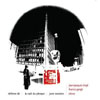 MIO continues what's looking like a campaign to reissue all the lost gems of the Nurse With Wound list with this long-forgotten and seminal document of the French progressive scene. Birgé Gorgé Shiroc were Jean-Jacques Birgé, Francis Gorgé, and Shiroc before the first two formed the flagship prog collective Un Drame Musical Instantane. Recorded in 1975, Défense de is their only record under the BGS moniker, entering the arms of obscurity only one year before Un D.M.I. became active. As such, the record paints a picture of the Birgé and Gorgé in an early stage of their development, but one that was already overflowing with good ideas.
MIO continues what's looking like a campaign to reissue all the lost gems of the Nurse With Wound list with this long-forgotten and seminal document of the French progressive scene. Birgé Gorgé Shiroc were Jean-Jacques Birgé, Francis Gorgé, and Shiroc before the first two formed the flagship prog collective Un Drame Musical Instantane. Recorded in 1975, Défense de is their only record under the BGS moniker, entering the arms of obscurity only one year before Un D.M.I. became active. As such, the record paints a picture of the Birgé and Gorgé in an early stage of their development, but one that was already overflowing with good ideas.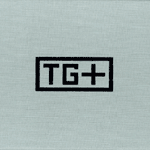 Everybody should know by now that this boxed set completes the CD collection of all the live Throbbing Gristle concerts begun with the CD release of 24 about a year ago. Complain all you want about cashing in or whatever, but for the package, it's an appropriate price.
Everybody should know by now that this boxed set completes the CD collection of all the live Throbbing Gristle concerts begun with the CD release of 24 about a year ago. Complain all you want about cashing in or whatever, but for the package, it's an appropriate price. Some bands just come together and beautiful sounds start to flow out.It's rare, but when it happens and the band is a true collaborationreflecting equal parts of all involved it can be truly amazing. LukeSutherland has made some fascinating music with Long Fine Killie andBows, as well as contributing lovely violin to recent Mogwai releases.Volker Bertelmann is making a name for himself with the electronic popmachinations of Tontraeger, and the two decided a project togethermight be in order. After working together a short time, withSutherland's smooth vocals and delicate guitar complementingBertelmann's beats and keys quite nicely, the two decided some bassmight round out the sound a bit better. Enter workaholic StefanSchneider, who loved what he heard and jumped in, becoming a fullmember of the band and adding his own trademark flavorings. This isindeed the aforementioned rare musical tour de force; the soundtrack ofwaking dreams, remembering what just happened in the mind and knowingthat it was truly magnificent. Sutherland's lyrics are freshly bizarrewhen present ("boy bands just escape me", "that's just fuckingheartbreak if you're a guy"), but it's clear why his work as an authorhas been lavished in recent years: he has a poet's heart with asatirist's delivery. The two electronic gurus craft a comfortable bedfor it all to lie on, and lie it does, like a young couple staring atthe clouds or stars above in wistful complacence. Even when Sutherlanddoesn't feel the need to sing and the trio just play, it's trulyhair-raising all over the place. Perfect programmed beats and chimingguitars meet with low dull bass and Rhodes in ways that are guaranteedto put a smile on the face. This is one I'll want to hear more of inthe future, I'm sure, and hopefully they're game to make it.
Some bands just come together and beautiful sounds start to flow out.It's rare, but when it happens and the band is a true collaborationreflecting equal parts of all involved it can be truly amazing. LukeSutherland has made some fascinating music with Long Fine Killie andBows, as well as contributing lovely violin to recent Mogwai releases.Volker Bertelmann is making a name for himself with the electronic popmachinations of Tontraeger, and the two decided a project togethermight be in order. After working together a short time, withSutherland's smooth vocals and delicate guitar complementingBertelmann's beats and keys quite nicely, the two decided some bassmight round out the sound a bit better. Enter workaholic StefanSchneider, who loved what he heard and jumped in, becoming a fullmember of the band and adding his own trademark flavorings. This isindeed the aforementioned rare musical tour de force; the soundtrack ofwaking dreams, remembering what just happened in the mind and knowingthat it was truly magnificent. Sutherland's lyrics are freshly bizarrewhen present ("boy bands just escape me", "that's just fuckingheartbreak if you're a guy"), but it's clear why his work as an authorhas been lavished in recent years: he has a poet's heart with asatirist's delivery. The two electronic gurus craft a comfortable bedfor it all to lie on, and lie it does, like a young couple staring atthe clouds or stars above in wistful complacence. Even when Sutherlanddoesn't feel the need to sing and the trio just play, it's trulyhair-raising all over the place. Perfect programmed beats and chimingguitars meet with low dull bass and Rhodes in ways that are guaranteedto put a smile on the face. This is one I'll want to hear more of inthe future, I'm sure, and hopefully they're game to make it. 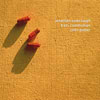 This is the sound of inner experience. Isolation drifts over the bodyand the soul, trapped in a mist that slowly reveals itself over thecourse of these two discs. Jonathan Coleclough, Steven Miller, andColin Potter are all gurus of the meditative and sublime, crafting fromseemingly thin air the most delicate and shattering of sounds. This isthe hinge of their music; the juxtaposition that carries with it theforce of every living particular in the universe. Though seeminglydelicate and composed of broken clocks, cold wind through the trees,and the metallic OMof consciousness, every track has a heaviness or a weight that can feelparanoid or transcendental. Bass Communion's mix of Potter andColeclough's "Yossaria" begins as a thick grinding of sludge passingthrough layers of crust before emerging out of the darkness with thecall of a fog horn in the distance. Afterwards, the song is alldesolation and the slow collapse of time. Bass Communion virtuallystrips away all conceptual possibilities and leaves only a thing,gorgeous and nameless, to communicate with. By the end of the songbirds are chirping and the sound of a river passes by in thebackground; it truly feels like a journey from the unreal to tangiblecomfort. Potter and Coleclough both contribute two mixes. Potter sticksto a generally soft approach that only escalates the mystical aurasurrounding much of the album; his rendition of "Raiser" blendsrhythmic pulses with the chaos of a futuristic hospital bleeding thesickly glow of fluorescent lights. It's Coleclough's work that takesthe cake, however. "Pethidine" is a twenty-eight minute pause, frozenperfectly in space and time. It develops and unfolds slowly, revealingeach of its particularities only to show that they are indeed oneentity turning inside out. The effect of listening to this as loud ashumanly possible is outstanding; being surrounded physically by thissound has literally kept me warm at night. It isn't suffocation, but itis a presence. The second disc included is Coleclough's secondcontribution and the final piece of the album. Clocking in atseventy-four minutes long, "Epidural" manages to erase all memory, allsensation, and leave only the truth of intuition in its wake. Thismusic deserves a change to be recognized; its immediacy, weight, andthrust is unequalled in much of the music I know.
This is the sound of inner experience. Isolation drifts over the bodyand the soul, trapped in a mist that slowly reveals itself over thecourse of these two discs. Jonathan Coleclough, Steven Miller, andColin Potter are all gurus of the meditative and sublime, crafting fromseemingly thin air the most delicate and shattering of sounds. This isthe hinge of their music; the juxtaposition that carries with it theforce of every living particular in the universe. Though seeminglydelicate and composed of broken clocks, cold wind through the trees,and the metallic OMof consciousness, every track has a heaviness or a weight that can feelparanoid or transcendental. Bass Communion's mix of Potter andColeclough's "Yossaria" begins as a thick grinding of sludge passingthrough layers of crust before emerging out of the darkness with thecall of a fog horn in the distance. Afterwards, the song is alldesolation and the slow collapse of time. Bass Communion virtuallystrips away all conceptual possibilities and leaves only a thing,gorgeous and nameless, to communicate with. By the end of the songbirds are chirping and the sound of a river passes by in thebackground; it truly feels like a journey from the unreal to tangiblecomfort. Potter and Coleclough both contribute two mixes. Potter sticksto a generally soft approach that only escalates the mystical aurasurrounding much of the album; his rendition of "Raiser" blendsrhythmic pulses with the chaos of a futuristic hospital bleeding thesickly glow of fluorescent lights. It's Coleclough's work that takesthe cake, however. "Pethidine" is a twenty-eight minute pause, frozenperfectly in space and time. It develops and unfolds slowly, revealingeach of its particularities only to show that they are indeed oneentity turning inside out. The effect of listening to this as loud ashumanly possible is outstanding; being surrounded physically by thissound has literally kept me warm at night. It isn't suffocation, but itis a presence. The second disc included is Coleclough's secondcontribution and the final piece of the album. Clocking in atseventy-four minutes long, "Epidural" manages to erase all memory, allsensation, and leave only the truth of intuition in its wake. Thismusic deserves a change to be recognized; its immediacy, weight, andthrust is unequalled in much of the music I know. It might be easy to think about this, Jeck's seventh solo release, as marking a maturation or a refinement of the artist's sound, but that analysis cheapens the singular vision he's established over the past years. Sure, he arrived in the wake of Christian Marclay's ground-breaking turntable explorations, after groups like Zoviet France had set the bar for grainy, delay-ridden loopscapes, but Jeck has, since his beginnings, created some of the most distinctive music to emerge from either turntablist or ambient traditions.
It might be easy to think about this, Jeck's seventh solo release, as marking a maturation or a refinement of the artist's sound, but that analysis cheapens the singular vision he's established over the past years. Sure, he arrived in the wake of Christian Marclay's ground-breaking turntable explorations, after groups like Zoviet France had set the bar for grainy, delay-ridden loopscapes, but Jeck has, since his beginnings, created some of the most distinctive music to emerge from either turntablist or ambient traditions.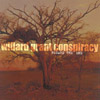 Death is an opportunity, a chance to either lament the loss orappreciate what is being left. It is the struggle to go off in fear, indoubt or to depart with head held high. In any case, it is a subjectthat is difficult to approach head on—and probably for the best, as thetrue weight of dying lies not in the act itself but in everythingleading up to it. Regard the Endapproaches death obliquely, offering the feelings, textures, andmusings on life that make death such a spectacular event. There areslices of youthful abandon, loving memories and bitter regrets thathave rooted themselves in, and make the sting of passing even greater.It's the challenge to look back, to leave those thoughts behind,fearful yet hopeful, uncertain yet faithful, and embrace the totalityof it all. The Willard Grant Conspiracy explores these subjects with aversatile troupe of players, attacking their pieces with such a collageof instrumentation and tender arrangement, the songs bud and bloomright before your eyes. Somber acoustic guitar anchors the gruff,weathered vocals of singer Robert Fisher, the centerpiece of anensemble that offers dense, soaring trumpets and weary viola moans. Theheavy lineup grants Regard the End remarkable impact, allowingevery intonation and accent creep across and drive the emotion home.The opening song, "River in the Pines," is a civil war era ballad thatrambles on in a smoky, smoldering mass, crackling and waiting to popopen in a fiery burst. The mix of both traditional folk songs andoriginal works allows for personal expression and insight as well as amuch wider concept of the subject matter through time. A particularstrength of the Willard Grant Conspiracy, along with the utilization oftheir individual parts is the use of guest singers to help add to theatmosphere of their songs. Kristin Hersh appears on "The Ghost of theGirl in the Well," with an eerie contribution to the tale of a murderedyoung girl. She and fisher share the words and their pacing sets theentire scene in slow motion, drawing every last bit of feeling andpower from the disturbing imagery. Hersh's echoing, distant wails areaffecting as they sink into the depths of the music. Singer Jess Kleinalso contributes a set of stunning vocal performances on "The Trials ofHarrison Hayes," and several other songs. These additions strengthenthe already powerful punch in the Conspiracy's music. "The SufferingSong" is the emotional crux of Regard the End, with Fisher andKlein finding themselves on the edge and greeting the uncertainty ofwhat's beyond it with the certainty of what is there. "Suffering'sgonna come to everyone, someday." There is a restrained grace in theirvoices that makes the end of the journey feel less like a defeat andmore like a triumph. The ability to find strength and composure throughsorrow and adversity shines through and closes the album on a gloriousnote.
Death is an opportunity, a chance to either lament the loss orappreciate what is being left. It is the struggle to go off in fear, indoubt or to depart with head held high. In any case, it is a subjectthat is difficult to approach head on—and probably for the best, as thetrue weight of dying lies not in the act itself but in everythingleading up to it. Regard the Endapproaches death obliquely, offering the feelings, textures, andmusings on life that make death such a spectacular event. There areslices of youthful abandon, loving memories and bitter regrets thathave rooted themselves in, and make the sting of passing even greater.It's the challenge to look back, to leave those thoughts behind,fearful yet hopeful, uncertain yet faithful, and embrace the totalityof it all. The Willard Grant Conspiracy explores these subjects with aversatile troupe of players, attacking their pieces with such a collageof instrumentation and tender arrangement, the songs bud and bloomright before your eyes. Somber acoustic guitar anchors the gruff,weathered vocals of singer Robert Fisher, the centerpiece of anensemble that offers dense, soaring trumpets and weary viola moans. Theheavy lineup grants Regard the End remarkable impact, allowingevery intonation and accent creep across and drive the emotion home.The opening song, "River in the Pines," is a civil war era ballad thatrambles on in a smoky, smoldering mass, crackling and waiting to popopen in a fiery burst. The mix of both traditional folk songs andoriginal works allows for personal expression and insight as well as amuch wider concept of the subject matter through time. A particularstrength of the Willard Grant Conspiracy, along with the utilization oftheir individual parts is the use of guest singers to help add to theatmosphere of their songs. Kristin Hersh appears on "The Ghost of theGirl in the Well," with an eerie contribution to the tale of a murderedyoung girl. She and fisher share the words and their pacing sets theentire scene in slow motion, drawing every last bit of feeling andpower from the disturbing imagery. Hersh's echoing, distant wails areaffecting as they sink into the depths of the music. Singer Jess Kleinalso contributes a set of stunning vocal performances on "The Trials ofHarrison Hayes," and several other songs. These additions strengthenthe already powerful punch in the Conspiracy's music. "The SufferingSong" is the emotional crux of Regard the End, with Fisher andKlein finding themselves on the edge and greeting the uncertainty ofwhat's beyond it with the certainty of what is there. "Suffering'sgonna come to everyone, someday." There is a restrained grace in theirvoices that makes the end of the journey feel less like a defeat andmore like a triumph. The ability to find strength and composure throughsorrow and adversity shines through and closes the album on a gloriousnote.  Sitting down to listen to this disc for the first time, I figured that I was going to get something along the lines of Loveman Plays Psychedelic Swing(three-fourths of Emergency! is also in the Quintet, the discs wererecorded nine months apart, etc.), and instead, I got a trip back toGround-Zero's Plays Standards, courtesy of, of all things,Kikuchi Naruyoshi's sax playing. Seven very long and productive yearsago, it grated on my nerves with its schmaltzy tenor intensity, and itstill does, only now it's rounded out by another guy on alto andsoprano. Thankfully, just when the two of them threaten to drag theshoulder-scrunching out a bit too long on "Song for Che", they'reslapped aside by the wailing guitar and thudding drums of Otomo's own"Reducing Agent" in one of the most welcome transitions I've heard inmonths. The original tunes aren't especially brilliant, and they lackeasy hooks that they can be identified by, but they also give the albumand ensemble the feeling of being defined by more than just somebody'srecord collection. Similarly, while I'm not wild about Sachiko M'scontribution of sine waves to a Mingus tune, her involvement in thelast two tracks clearly shows off how her repertoire has grown sinceher sample-triggering days. (Mind you, any one of two dozen otherrecordings from the last couple of years would do this just as well.)Yoshigaki Yasuhiro's drumming leans towards the energetic and heavymost of the time, but it's never distracting, and it's even downrightpretty when he scales it back to brushed cymbals. Aside from the saxbits that get my hackles up, then, this is the kind of revisitingproject that I wish more artists would tackle: instead of just remixingtwenty-year-old tapes and grinding out some 12"s for the hell of it,ONJQ have gone back to old notions and produced an album that reflectshow they've changed as musicians. If we're lucky, things will be justas fresh in 2011.
Sitting down to listen to this disc for the first time, I figured that I was going to get something along the lines of Loveman Plays Psychedelic Swing(three-fourths of Emergency! is also in the Quintet, the discs wererecorded nine months apart, etc.), and instead, I got a trip back toGround-Zero's Plays Standards, courtesy of, of all things,Kikuchi Naruyoshi's sax playing. Seven very long and productive yearsago, it grated on my nerves with its schmaltzy tenor intensity, and itstill does, only now it's rounded out by another guy on alto andsoprano. Thankfully, just when the two of them threaten to drag theshoulder-scrunching out a bit too long on "Song for Che", they'reslapped aside by the wailing guitar and thudding drums of Otomo's own"Reducing Agent" in one of the most welcome transitions I've heard inmonths. The original tunes aren't especially brilliant, and they lackeasy hooks that they can be identified by, but they also give the albumand ensemble the feeling of being defined by more than just somebody'srecord collection. Similarly, while I'm not wild about Sachiko M'scontribution of sine waves to a Mingus tune, her involvement in thelast two tracks clearly shows off how her repertoire has grown sinceher sample-triggering days. (Mind you, any one of two dozen otherrecordings from the last couple of years would do this just as well.)Yoshigaki Yasuhiro's drumming leans towards the energetic and heavymost of the time, but it's never distracting, and it's even downrightpretty when he scales it back to brushed cymbals. Aside from the saxbits that get my hackles up, then, this is the kind of revisitingproject that I wish more artists would tackle: instead of just remixingtwenty-year-old tapes and grinding out some 12"s for the hell of it,ONJQ have gone back to old notions and produced an album that reflectshow they've changed as musicians. If we're lucky, things will be justas fresh in 2011. 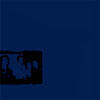 Mars has always been my favorite of the four No New Yorkbands because their music sounds consistently on the verge of collapse.While fellow scenesters DNA share a similar spastic approach, there canbe no denying that Mars helped take the noisier, amateurish tendenciesof the genre to their logical extremes, becoming one of the first andmost important groups to create noise music under rockist pretence.Whereas the particular "style" or modus operandi of cohorts like TheJerks and The Contortions are now somewhat easy to pinpoint, Marsremains as pleasantly enigmatic as they ever were, no doubt becausethere was never much of a guiding force behind their work in the firstplace. The catchy, almost generically post-punk grooves laid down onthe band's first single ("3-E" b/w "11,000 Volts") mask the fact thatmost of the members started learning their instruments at the firstpractice, if that early. Even so, the Martian melting pot,though widely mimicked, is a unique and matchless brew, thanks to theband's method for combining disparate melodic or rhythmic lines,creating within each song a struggle for dominance that, instead ofbringing the music to a standstill, creates a kind of perpetualroll-over and an indirect, multi-layered, even schizophrenic sound. Theresults range from distorted, Beefheart-ian call-and-response freakoutsto near-impenetrable tapestries of noise that writhe with the burden oftheir incompatible elements but maintain a thrilling, if precariousbalance. It was no doubt this chaotic, storm-like quality of the Marssound that prompted Jim "Feotus" Thirwell to lend his production skillsto the band's first archival release, 78+. Thirwell's mixemphasizes the music's quasi-industrial elements and its low-end,making the swirling atmospherics and more abrasive undercurrents ofmany tracks more prominent. Though his approach was admirable, andespecially effective on the several live tracks included, the band wasunsatisfied, and decided to put out a remixed, re-sequenced CD,including only their 11-song studio output and modeled to appear as aMars LP would have, had they released it over 20 years ago. The new mixsounds great and gives the songs a punch quietly lacking on 78+and even a bit on Eno's original mixes. The frenetic tumble of thesongs keeps its form, and a new crispness makes the music sound as wildas ever. The limited track list leaves out only three tracks from 78+'snear-complete collection, and this disc honestly feels like thefull-length that should have been. It's nice to see music this goodgetting the treatment and presentation it deserves.
Mars has always been my favorite of the four No New Yorkbands because their music sounds consistently on the verge of collapse.While fellow scenesters DNA share a similar spastic approach, there canbe no denying that Mars helped take the noisier, amateurish tendenciesof the genre to their logical extremes, becoming one of the first andmost important groups to create noise music under rockist pretence.Whereas the particular "style" or modus operandi of cohorts like TheJerks and The Contortions are now somewhat easy to pinpoint, Marsremains as pleasantly enigmatic as they ever were, no doubt becausethere was never much of a guiding force behind their work in the firstplace. The catchy, almost generically post-punk grooves laid down onthe band's first single ("3-E" b/w "11,000 Volts") mask the fact thatmost of the members started learning their instruments at the firstpractice, if that early. Even so, the Martian melting pot,though widely mimicked, is a unique and matchless brew, thanks to theband's method for combining disparate melodic or rhythmic lines,creating within each song a struggle for dominance that, instead ofbringing the music to a standstill, creates a kind of perpetualroll-over and an indirect, multi-layered, even schizophrenic sound. Theresults range from distorted, Beefheart-ian call-and-response freakoutsto near-impenetrable tapestries of noise that writhe with the burden oftheir incompatible elements but maintain a thrilling, if precariousbalance. It was no doubt this chaotic, storm-like quality of the Marssound that prompted Jim "Feotus" Thirwell to lend his production skillsto the band's first archival release, 78+. Thirwell's mixemphasizes the music's quasi-industrial elements and its low-end,making the swirling atmospherics and more abrasive undercurrents ofmany tracks more prominent. Though his approach was admirable, andespecially effective on the several live tracks included, the band wasunsatisfied, and decided to put out a remixed, re-sequenced CD,including only their 11-song studio output and modeled to appear as aMars LP would have, had they released it over 20 years ago. The new mixsounds great and gives the songs a punch quietly lacking on 78+and even a bit on Eno's original mixes. The frenetic tumble of thesongs keeps its form, and a new crispness makes the music sound as wildas ever. The limited track list leaves out only three tracks from 78+'snear-complete collection, and this disc honestly feels like thefull-length that should have been. It's nice to see music this goodgetting the treatment and presentation it deserves. 
